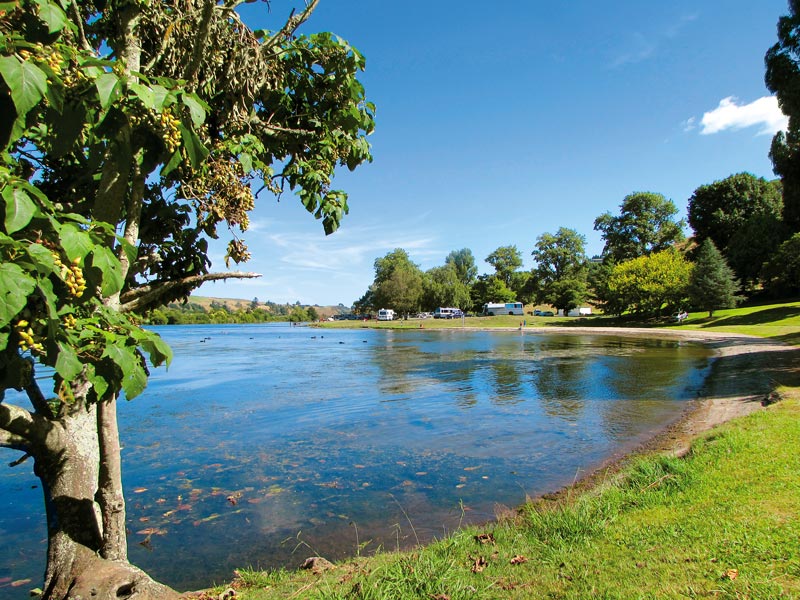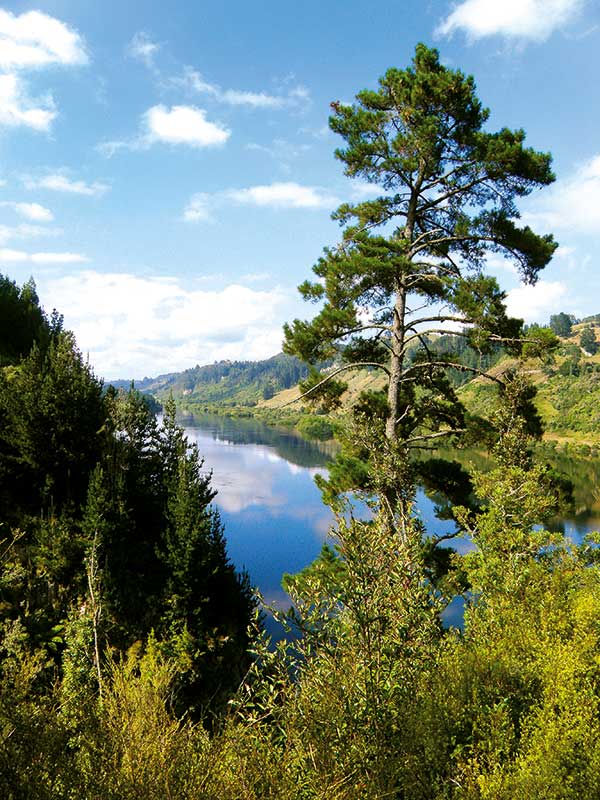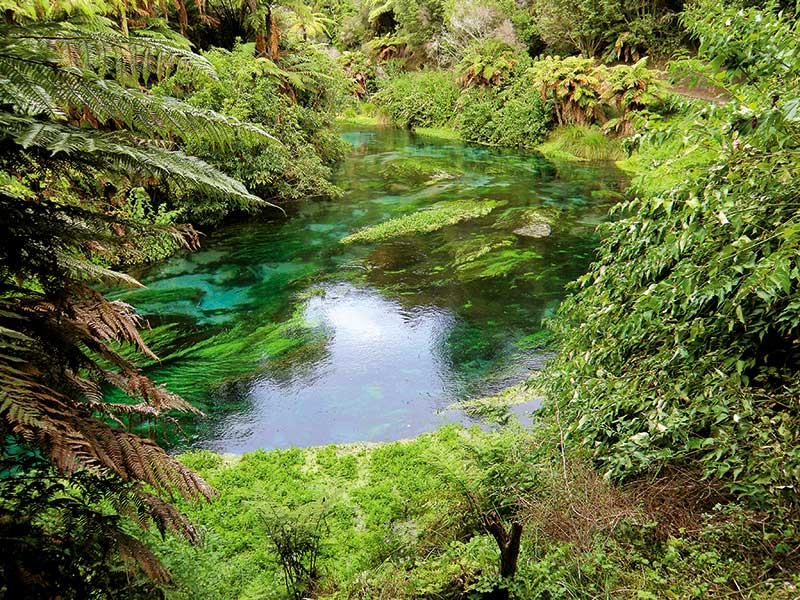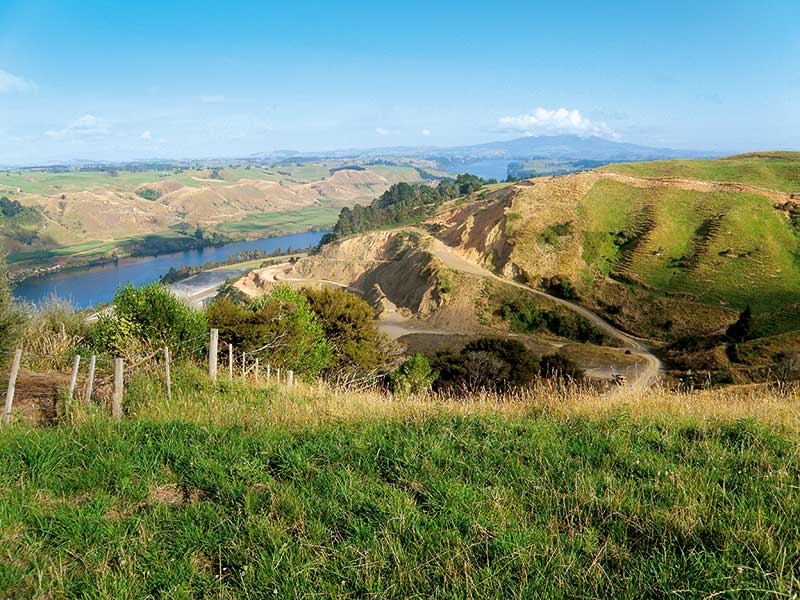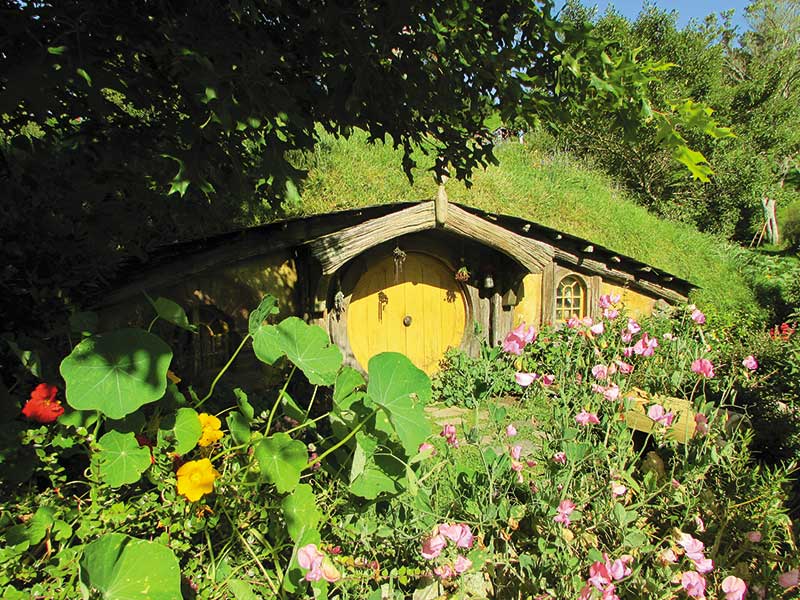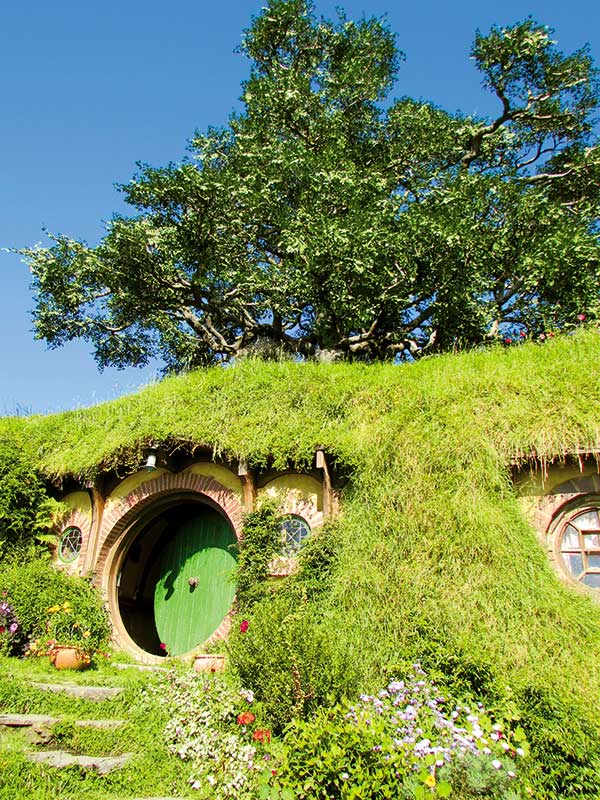The Waikato is a large and varied area encompassing the wild surf beaches of Raglan, the pastoral countryside of Cambridge, the vibrant city of Hamilton, and the quiet spa town of Te Aroha.
New Zealand’s longest river, the Waikato, flows through this landscape, a spiritual presence and a recreational resource for locals and visitors alike. The Waikato River’s more rugged stretches can be accessed along the Waikato River Trails while mountainous areas such as Pirongia, Kaimai and Maungatautari provide longer tramping options.
During our last visit to the area we based ourselves in Waikato’s heartland; firstly at Horahora Domain by Lake Karapiro, then at Matekuri Island in Lake Maraetai, Mangakino. Horahora Reserve is one of several attractive freedom camping spots on the shores of Lake Karapiro. The lake was formed by damming of the Waikato River, and is a popular spot for families and waterskiers. I was keen to visit nearby Hobbiton, which has been on my bucket list for ages.
Hobbiton is just a few kilometres north of Horahora Domain, via SH29, and turned out to be a magical place. The Waikato’s rolling hills were punctuated by little doors and windows, pathways winding down to a mill on a pond and an old inn, the Green Dragon. All make-believe, of course, the movie set made for The Lord of the Rings and Hobbit films. I have been a fan of the books forever and was delighted with the tour.
The Waikato region has its share of natural wonders too. Just southeast of Tirau is the Blue Spring at the Te Waihou Walkway. The water here takes 100 years to percolate through to the spring and is so pure that it is used for 70 percent of the water bottled in New Zealand and supplies the town of Putaruru without any need for treatment. The walk to the Blue Spring follows the banks of the Waihou River, past pools and waterfalls.
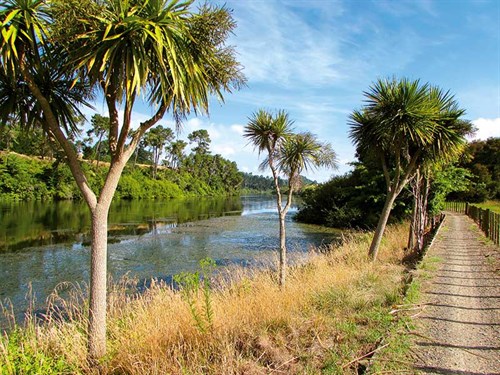
Tirau, Putaruru and Tokaroa are the main towns in this part of the Waikato. It is worth stopping in Tirau to browse the quirky shops and relax in one of the many cafes. The dominant features of the town are the giant corrugated iron buildings in the shape of a sheep dog and a sheep – a nod to the rural nature of the township.
While we were based at Lake Karapiro, we cycled the northern part of the Waikato River Trails. The trail starts (or finishes) at Pokaiwhenua Bridge and follows the lakeside to Arapuni where there is an historic swing-bridge. Along the trail we had views of Maungatautari Mountain which we visited later that day.
Maungatautari is known as Sanctuary Mountain – it is a mainland ecological ‘island’ surrounded by a 47km predator-proof fence. Inside the fence there are 3400 hectares of forest, full of ancient rata and rimu trees.
When we moved further south, we camped at Mangakino. There is freedom camping on the waterfront but we prefer Matekuri Island, which is accessed via a causeway.
From here we cycled more of the Waikato River Trails starting at Atiamuri. The track runs close beside Lake Whakamaru and there are views of cliffs on the other side, though it is not advisable to take your eyes of the trail for long. Although the riding is challenging, it is rewarding too. The Waikato River can be seen from vantage points not accessible from the road.
We only sampled a part of the Waikato region on this trip: there are other areas waiting to be explored next time. Like the hobbit Bilbo Baggins, we are keen to have more travels in New Zealand’s Middle-earth heartland.

